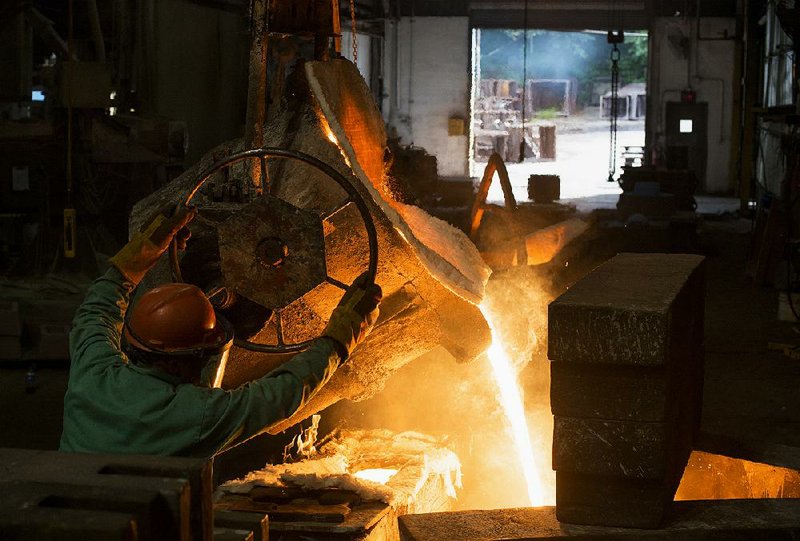WASHINGTON -- Orders to U.S. factories for big-ticket manufactured goods surged in July, lifted in part by the biggest increase in orders in a key investment category since January.
Orders for durable goods jumped 4.4 percent in July, rebounding from a 4.2 percent drop in June, the Commerce Department reported Thursday. The changes in both months were driven by swings in the volatile category of commercial aircraft.
An important category that serves as a proxy for business investment rose 1.6 percent in July, up from a 0.5 percent rise in June. It was the best showing in this category in six months. The result could be a sign that business investment is starting to rebound after the big cutbacks earlier this year. The upswing in June and July came after decreases in both March and April.
"It's encouraging, but it's one month," said Jacob Oubina, senior U.S. economist at RBC Capital Markets LLC in New York. "We have to see orders translate into actual shipments. The rest of the domestic economy is doing well."
American manufacturers have struggled this year with a strong dollar, which has hurt exports, and a drop in investment spending in the energy sector, reflecting falling oil prices.
Orders for commercial aircraft surged 89.9 percent in July after a plunge of 59.7 percent in June. Excluding the volatile transportation category, orders rose 1.5 percent in July, the best showing since January.
Demand for primary metals such as steel rose 1.4 percent while orders for machinery rose 1.6 percent and demand for computers jumped 10.3 percent.
Economists saw the rise in the investment category as a tentative sign that this sector might be seeing signs of recovery, which could bolster overall economic growth in the second half of this year.
Sal Guatieri, senior economist at BMO Capital Markets, said he believed a modest rebound in investment spending would help increase the nation's gross domestic product growth to about 3.8 percent in the current July-September quarter, up from the anemic 1.2 percent growth rate in the April-June quarter.
He said that the rebound in financial markets after the turbulence caused by the June 23 vote in Britain to leave the European Union should reduce business uncertainty, "giving managers more confidence to expand their business."
Slightly fewer people filed for U.S. unemployment benefits last week, a sign the American job market remains healthy.
The Labor Department said Thursday that applications for unemployment aid slipped by 1,000 to a seasonally adjusted 261,000. The less volatile four-week average dropped by 1,250 to 264,000. Overall, the number of people receiving unemployment checks fell by 30,000 to 2.15 million, down 5 percent from a year earlier.
Applications are a proxy for layoffs. They have remained below 300,000 for 77 straight weeks, the longest streak since 1970. The current reading is even more impressive because the population has grown considerably since then.
Ian Shepherdson, chief economist at Pantheon Macroeconomics, suspects the flooding in Louisiana will send unemployment claims higher over the next week. Claims in Louisiana last week rose by 1,850 to 4,554, the biggest rise outside Michigan. Overall, Shepherdson said, "employers remain fundamentally optimistic over the economic outlook."
No states or U.S. territories estimated unemployment claims last week, and there was nothing unusual in the figures, according to the Labor Department.
The U.S. unemployment rate is 4.9 percent. Employers added 255,000 jobs in July and 292,000 in June.
Information for this article was contributed by Martin Crutsinger and Paul Wiseman of The Associated Press and Shobhana Chandra and Patricia Laya of Bloomberg News.
Business on 08/26/2016
